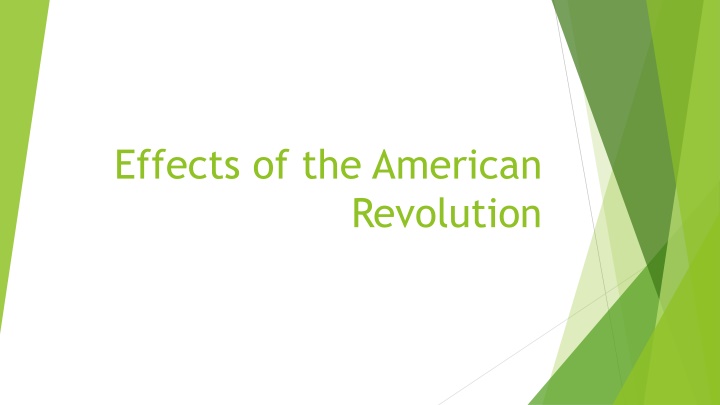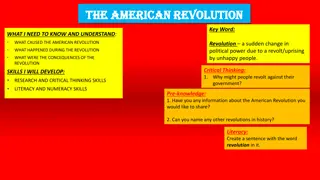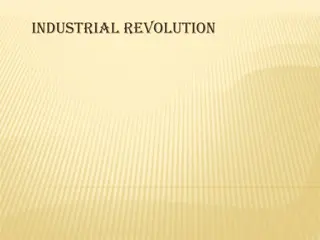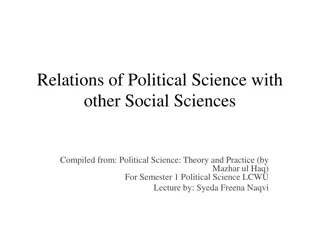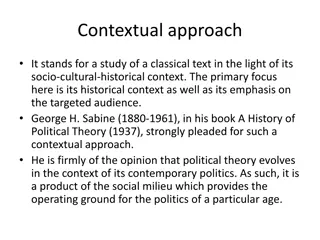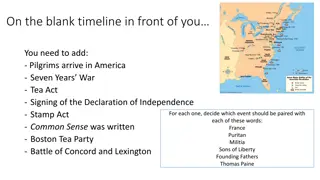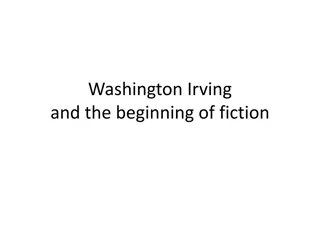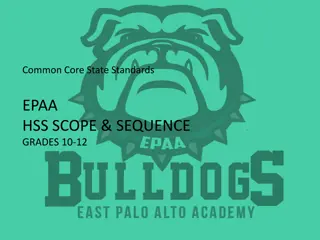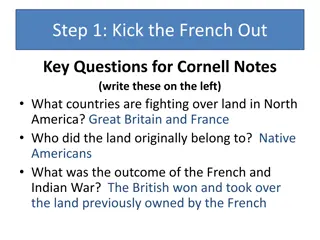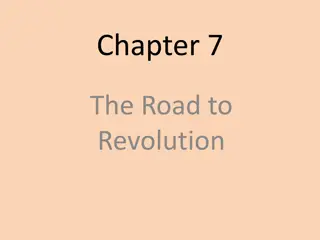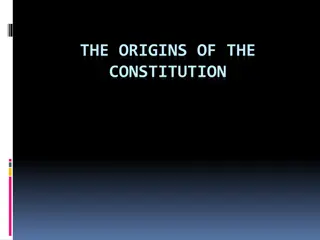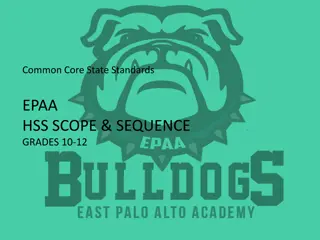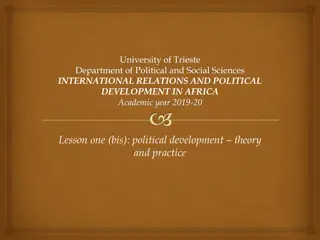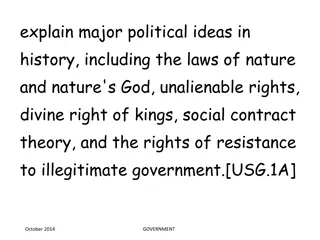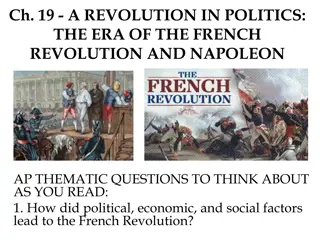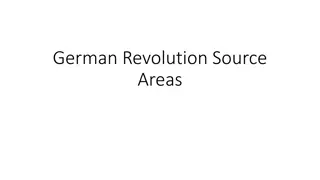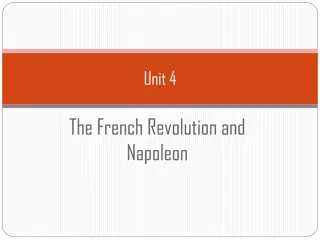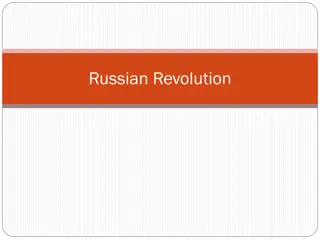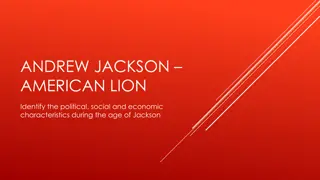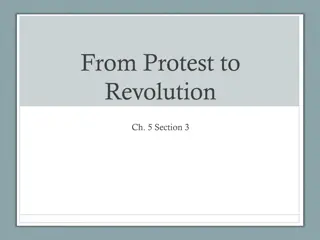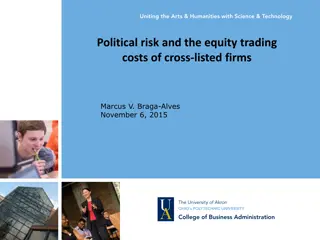Effects of the American Revolution: Political, Economic, and Social Impact
The American Revolution had profound effects on the political, economic, and social landscape of the newly formed United States. It led to the official recognition of the nation's independence, the demise of mercantilism, and changes in social structures and values. Explore the diverse repercussions of this pivotal historical event.
Uploaded on Mar 10, 2025 | 2 Views
Download Presentation

Please find below an Image/Link to download the presentation.
The content on the website is provided AS IS for your information and personal use only. It may not be sold, licensed, or shared on other websites without obtaining consent from the author.If you encounter any issues during the download, it is possible that the publisher has removed the file from their server.
You are allowed to download the files provided on this website for personal or commercial use, subject to the condition that they are used lawfully. All files are the property of their respective owners.
The content on the website is provided AS IS for your information and personal use only. It may not be sold, licensed, or shared on other websites without obtaining consent from the author.
E N D
Presentation Transcript
Effects of the American Revolution
Do Now: 11/4/19 What do you think were the effects of the American Revolution?
Political Effects U.S. officially recognized as independent nation. 13 united states. State constitutions guaranteed basic rights and freedoms. Foundation democracy. Expanded voting rights to adult white males (who owned property in order to hold office).
Economic Effects End mercantilism and restrictions on trade Need to industrialize End system of primogeniture (eldest son inheriting entire estate) prevent any type of nobility based on inheritance End trade preferences within the British empire (lost some of our best customers) Inflation ( Continentals worthless currency) Debt to both foreign countries and American investors High unemployment
Social Effects Identity of American - individualism; diversity. No aristocratic titles of nobility. Social mobility. Westward migration encouraged. Separation of church and state. Issues involving women s rights and slavery continued. Increased importance of education to democracy.
Do Now: 11/6/19 What was one political, social and economic effect of the American Revolution?
American Thought during and after the American Revolution Colonists thought that the National Government should be weak The British government was too strong Colonists believed that the states could make all the decisions The idea of Republicanism Thought that direct democracy would take too long Believed that most people are not intelligent
The United States FIRST government: The Articles of Confederation According to our previous definition of Confederation, what would it mean as it pertains to the 13 colonies? That all the colonies are equal That to pass a law 9 of 13 have to agree
The United States FIRST government: The Articles of Confederation Downfalls of the Articles of Confederation The States had all the power The States were the only ones that could raise taxes The States had their own armies The States created their own money
The United States FIRST government: The Articles of Confederation The States made their own treaties with natives and nations Could not pay off the national debt The national government had to ask states for money to pay expenses There were many states that were ready to go to war each other
The United States FIRST government: The Articles of Confederation Overall which level of government had more power? (National or State) Strengths of the Articles of the Confederation Organized the states during the American Revolution Completed the Treaty of Ghent with Britain Gained land to the Mississippi River Ended the American Revolution
The United States FIRST government: The Articles of Confederation Land distribution Land Ordinance of 1785 Created system to attract settlers People could buy land cheap Ultimately created towns
The United States FIRST government: The Articles of Confederation Northwest Ordinance 1787 Congress would create a territory That territory would have a governor and judges After 6,000 people were in the area the citizens could create a constitution After 60,000 people it could become a state Each is still used today
Event that made people aware there was need for a new government was Shays Rebellion (1786) Many soldiers that served in the American Revolution had not been paid Prices in the United States were very high People could not pay debt and lost their property The final straw was that Massachusetts needed money to pay off their states debts and raised taxes
Event that made people aware there was need for a new government was Shays Rebellion (1786) Daniel Shays and other farmers got guns and attacked an arsenal The rebellion was put down Soon people were worried that there was no national control Ultimately there was fear that other nations would see a country in chaos and try to take the nation over
Do Now: 11/7/19 What do you think was the weakest part of the Articles of Confederation?
The Constitution Convention Basics There were two very different conflicts going on during the convention Industrial north versus Agricultural south Big states versus small states There was a list of ideals the new government should have A national government with limited power The government should protect peoples basic rights There was a need for a strong national government There was to be a republican form There need to be a system of checks and balances
The Constitution Convention Basics The were some basic rules: Each state was to have one vote That the convention record was to be a secret Allowed delegates to speak freely Could change their opinion if they wanted
The debate over representation Large states wanted Congress representation based on population Belief that the states with the most population should have more power Express that the equal representation was a failure under the Articles of Confederation This plan is called the Virginia Plan
The debate over representation Small states wanted Congress representation be equal for each state Belief that larger states would abuse their power Small states would be servants to the larger states
The debate over representation The Great Compromise Also known as the Connecticut Plan There would be a bi- cameral congress House of Representatives Based on population Would have the sole job of starting all money bills
The debate over representation Senate Each state would have two Senators Would be given the role of advice to President Both houses could start a bill Both houses could stop a bill from the other house by not passing that bill
North Versus South Slavery Population bases The North had a larger free population The South had a larger slave population The Slave Trade South wanted the slave trade protected North found the slave trade disgusting
North Versus South Protective Tariffs These are high taxes on imported goods The North wanted high tariffs so that the South would buy goods from the North The South imported and exported goods to England With high tariffs the South feared They would not export more goods That the prices of imported good would be high
The Compromises Protective Tariffs The National Government could regulate trade The only exception was slavery until 1808 Congress could then change the law
The Compromises Slavery The 3/5 compromise This is when 5 slaves = 3 whites This would allow Southern States to have a larger population The Fugitive Slave Clause Stated that any slave who escaped must be returned After these issues were dealt with the rest of the Constitution was constructed with some ease
Do Now: 11/8/19 What is the Great Compromise?
What is the US Constitution? The supreme law of the United States. It is the foundation and source of the legal authority underlying the existence of the United States of America and the Federal Government of the United States. It provides the framework for the organization of the United States Government.
When was it written? May 25thto September 17th, 1787 Philadelphia Intention was to revise Articles of Confederation Ended up replacing the Articles and creating a new government Called the Constitutional Convention.
What are the basic principles of the Constitution? Popular Sovereignty Government power resides in the people Limited government Government is not all powerful, can only do what the people let it.
What are the basic principles of the Constitution? Separation of Powers Helps prevent one branch from becoming too powerful Checks and Balances Federalism Division of power among national and state governments
Do Now: 11/12/19 What are the first 10 amendments to the Constitution called?
Three Branches of Government Article One: Legislative Branch This Branch makes laws This is to be done through Congress which has two houses House of Representatives and a Senate. 435 member of the House and 100 Senators. The founders of the Constitution expected the Legislative Branch to be the most important branch of government, but feared if its power wasn t clearly defined it could endanger liberty.
Three Branches of Government So the Legislative branch was given expressed powers. Expressed Powers- Powers directly stated in the Constitution. Enumerated Powers- The powers listed in Article I Section 8 are called enumerated powers, because they are numbered 1-18. One of these enumerated powers is called the elastic clause. Elastic Clause- gives Congress the right to make any laws they seem necessary to carry out its other powers. Allows Congress to stretch its power to meet new situations the founders couldn t anticipate.
Three Branches of Government Article Two: The Executive Branch This branch enforces laws Headed by the President Requirements: The person needs to be 35 years old Must be natural born Term is four years The maximum is 10 years
Three Branches of Government Roles of the President Chief Executive Enforces laws Makes an annual budget In charge of government agencies Has the power to pardon persons Chief of State Ceremonial head of government He represents our country Commander and Chief Controls the military
Three Branches of Government Foreign Policy Chief Meets other world leaders Appoints ambassadors to other countries Negotiate treaties The Senate must approve the treaty Chief Legislator Recommend laws that congress should pass Has the power to Sign a law Veto a law (which means stop or cancel) Chief of a Political Party Influence party decisions
Three Branches of Government Electing the President is done through the Electoral College The framers did not trust people to choose the right person The procedure: The number of votes per state is equal to the number of representatives in the House of Representative plus two for the number of Senators. When a candidate wins the state he/she wins all the votes To become president the person must win a majority (270) If there is no majority winner the President is elected by the House of Representatives If the President dies the Vice-President takes over
Three Branches of Government Article Three: The Judicial Their job is to interpret laws Currently there are nine justices Each justice Is nominated by the President Must be approved by the US Senate
Three Branches of Government Requirements None The Supreme Court is the National Court The Supreme Court hears the following types of cases Disputes between states Disputes between citizens from different states Review lower court decisions that conflict with federal law
Do Now: 11/13/19 What are the three branches of government?
Basic Principles of the US Constitution Popular Sovereignty That the power of government comes from the people. Federalism The idea that power between the states and federal government are divided The National government deals with National issues While states deal with issues with the states There are three types of power
Basic Principles of the US Constitution Delegated Powers (National Powers) Declare War Issue Money Negotiate Treaties Regulate interstate commerce Regulate foreign trade
Basic Principles of the US Constitution Concurrent Powers (Shared Powers) Levy taxes Define crimes and punishments Determine voting qualifications Borrow Money
Basic Principles of the US Constitution Reserved Powers (State Powers) Regulate education Grant licenses Provide police Regulate property Conduct elections
Basic Principles of the US Constitution Denied Powers Cannot deny Habeas Corpus A prisoner must be brought to court to see if they are being held legally Cannot spend money without congressional approval Cannot pass an ex post facto law Cannot tax exports States cannot do the following Tax the federal government Tax imports Coin Money
Basic Principles of the US Constitution Separation of Powers oThis to ensure no branch of government becomes too powerful oThis is an idea borrowed from Montesquieu oThe branches have different jobs Legislative Executive Judicial
Basic Principles of the US Constitution Checks and Balances The legislative branch checks Executive by threat of impeachment Override of a veto this a 2/3 vote to against the veto Approve/reject treaties with other nations
Basic Principles of the US Constitution Judicial By threat of impeachment Approve/reject judge appointments The Executive branch checks Legislative Propose Laws Negotiate treaties Veto laws Executive Grant pardons Appoint Judges
Basic Principles of the US Constitution The Judicial branch checks Legislative Declare laws unconstitutional Executive Declare actions unconstitutional
